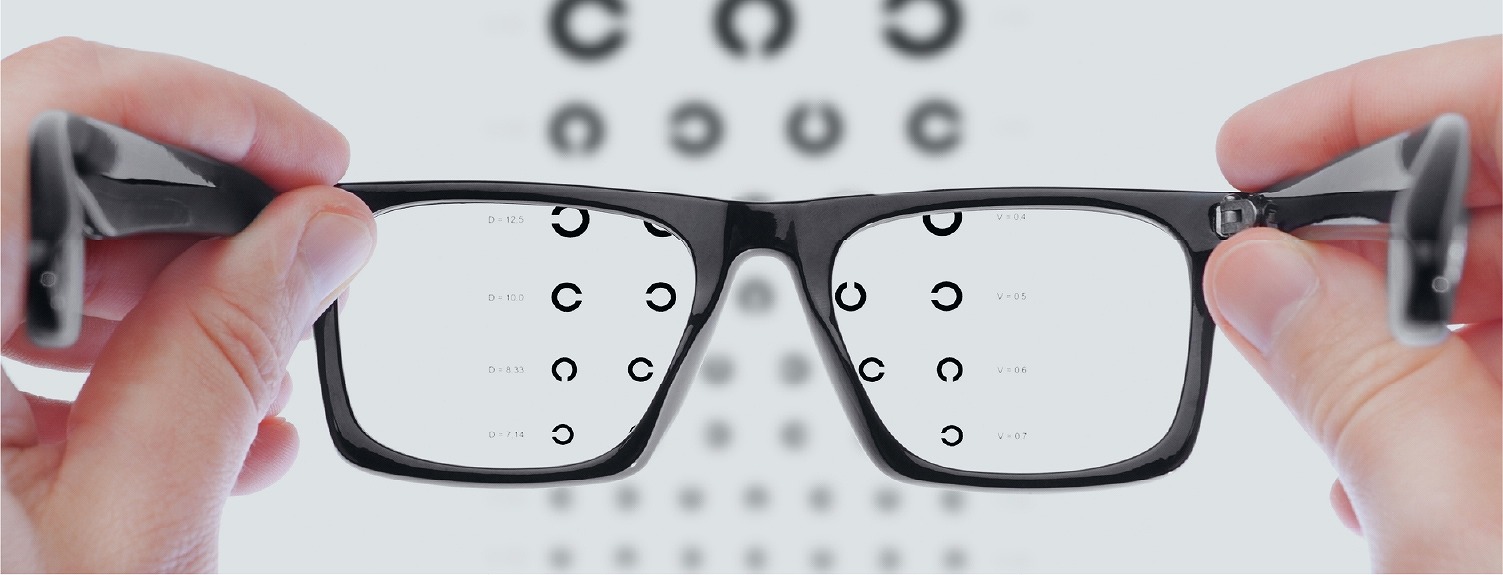Transmitted light will be continuously adjusted during use to ensure an optimal degree of accommodation over the entire lens surface, thereby carefully improving image formation on theretina. Making a flatter base curve results in thinning and weight saving advantages at thesame time. The distinct field of vision has been extended by optimizing astigmatism correction.
Without Retinal Focus Design Prioritizing in the thinness and lightness.

Difference of the angles between the luminous flux entering into eyes through the lens and the angle that ismeasured at lens metercauses a gap of imageformation on the retina, sothat the astigmatism occurs.
Retinal Focus Design The ease to see and the thinness and lightness coexists

In the case of wearing, by transmitting light flux or correcting aberration and frequency, the successful design allows the most suitable image formation on the retina through a lowbase-curved lens.
>Difference of power between indicated on a lens bag and measured by a lens-meter regarding lenses, which applied Retinal Focus design.
In case of lenses, which are applied Retinal Focus design, youmay notice the lenses show different power than what you ordered when you measure the lenses by a lens meter. It is because thelenses are designed to achieve the optimum vision under the condition of a user is actually wearing the lenses (glasses).There are indications of both Displayed Dioptric Power (DPT) and Actual DPT on a lens bag. Please refer to the Actual DPT whenyou inspect the lenses.

The way of measuring DPT
Please measure the lenses from convex side of the lens to check lens power.
The measured value can be different from the ordered power / the Displayed DPT.
1) Measurement of power for far vision Please measure the lenses at the measurement area for far vision ① from the convex side and check the measured value to the Actual DPT indicated on the lens bag.
2) Measurement of addition power Please measure the lenses at the measurement area for far vision ① and the measurement area for near vision ② from the convex side. Then check the difference of Spherical Equivalent (SE) of measured value ① and ② to the Actual DPT indicated on the lens bag. SE = Sph + Cyl/2
3) Measurement of prism


















